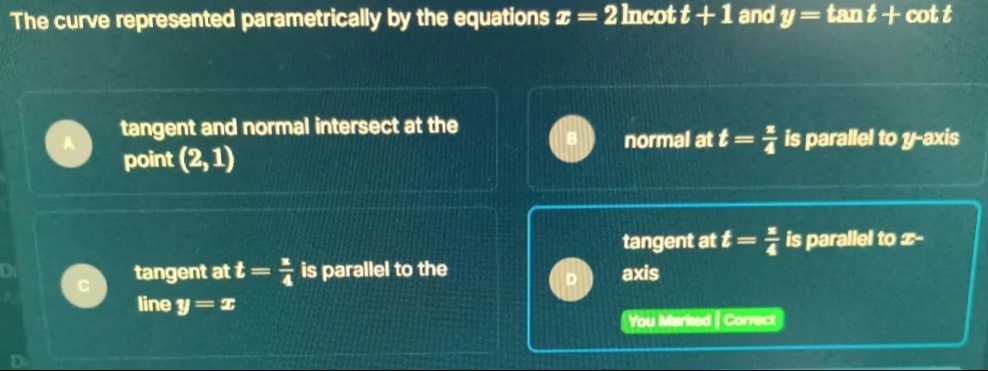Question
Question: The curve represented parametrically by the equations $x=2\ln\cot t + 1$ and $y = \tan t + \cot t$...
The curve represented parametrically by the equations x=2lncott+1 and y=tant+cott

A
tangent and normal intersect at the point (2, 1)
B
normal at t=4π is parallel to y-axis
C
tangent at t=4π is parallel to the line y=x
D
tangent at t=4π is parallel to x-axis
Answer
B and D
Explanation
Solution
The derivatives are:
dtdx=−sintcost2
dtdy=sec2t−csc2t
Thus,
dxdy=dtdxdtdy=−sintcost2sec2t−csc2t=−2sintcost(sec2t−csc2t)=−21(tant−cott).
At t=4π, slope is 0 so the tangent is horizontal (parallel to the x-axis) and the normal (perpendicular to the tangent) is vertical (parallel to the y-axis). The point on the curve at t=4π is (1,2), not (2,1).
